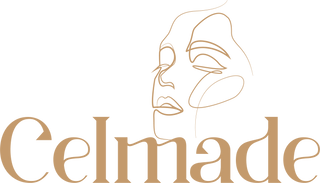Botox is a safe and minimally invasive procedure used to treat facial wrinkles. It involves injecting small amounts of botulinum toxin into specific muscles.
This neurotoxin blocks nerve signals to the muscle. As a result, the muscle cannot contract, which softens fine lines and wrinkles.
Lines and wrinkles on the face
When Botox is injected, it weakens or paralyses certain muscles in your face. This reduces the appearance of fine lines and wrinkles.
Botox can be used to treat crow's feet, frown lines, and other types of dynamic wrinkles caused by repeated muscle movement. These lines are most commonly found on the forehead, but can also occur between the eyebrows and around the eyes.
The treatment of these lines with Botox is often combined with dermal fillers, such as Juvederm or Restylane, to restore volume to your face. This helps to smooth out wrinkles and reduce the appearance of facial folds, as well.
Wrinkles that are not caused by muscle movement, such as those that form in the lips or under the chin (perioral wrinkles), can be treated with Botox as well. However, these lines may be more difficult to treat because they are deeper and tend to run perpendicularly to the underlying muscle fibers. This means that it is important to inject Botox in the correct direction and depth.
Wrinkles on the neck
The neck is a delicate area and often the first to show signs of aging. Whether from sun exposure, lack of targeted skin care, or the natural aging process, it can become dull and sagging.
The platysma muscle, which connects your collar bone to your lower face, is the main culprit behind neck lines and bands. When you contract this muscle, it creates vertical lines that are known as “neck bands” or “turkey neck.”
To help reduce the appearance of these horizontal bands, neuromodulators like Botox and Dysport can be injected into the neck muscles. When the muscles are relaxed, they soften the lines and bands on the neck and improve the look of the lower face too.
The right treatment for neck wrinkles depends on a patient’s specific concerns and goals. For instance, some patients prefer to combine a neck filler with neck Botox for a more rejuvenated appearance.
Droopy eyelids
Droopy eyelids are a common problem that people develop as they age. They can affect vision and cause eye and neck strain.
If you’re concerned about droopy eyelids, you can ask your doctor to perform a medical exam. They may use a slit lamp or do a Tensilon test to determine the cause of your eyelid drooping.
You might also be asked to do a few eye movement exercises. These exercises are aimed at strengthening the muscles that support your eyelids.
Your doctor can also recommend a prescription drug called Upneeq to treat mild and moderate droopy eyelids that are caused by aging or acquired ptosis. It doesn’t work for congenital ptosis, which is a condition in which your baby’s eyelids droop due to an underlying nerve problem or injury.
Botox is a popular cosmetic treatment that can be used to smooth out lines and wrinkles on the face. However, the neurotoxin can also cause droopy eyelids.
Mouth wrinkles
The mouth area is one of the first places on your face that you might begin to notice wrinkles and fine lines. This is because it has thinner skin, which has less collagen than other areas of the face.
If you are looking for a treatment for these fine lines, there are several options to consider. These include injectable treatments like Botox and dermal fillers.
Talk to your doctor about the best treatment for your skin type and concerns. You can also try chemical peels, which remove the top layer of skin and allow a newer layer to take its place.
Another way to reduce lip lines is by using a laser resurfacing technique. This procedure is a bit more invasive than other peeling procedures, but it can help get rid of fine wrinkles and light scarring. The procedure can be repeated every few months for better results.



